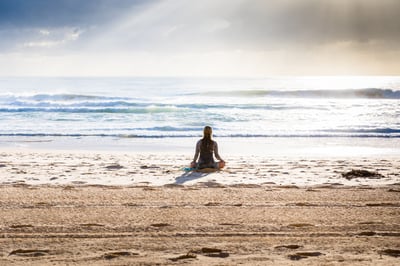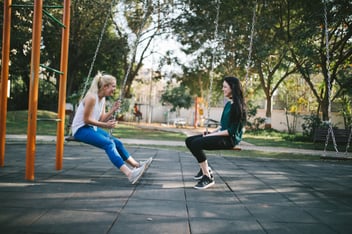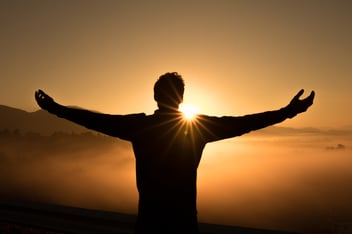 How your body aligns in meditation is important, whether you are sitting on the floor or in a chair. It’s essential to feel a firm connection with the floor (either through the “sit bones” — the lower portion of the pelvis — or through the feet). It’s also always appropriate to keep the spine long.
How your body aligns in meditation is important, whether you are sitting on the floor or in a chair. It’s essential to feel a firm connection with the floor (either through the “sit bones” — the lower portion of the pelvis — or through the feet). It’s also always appropriate to keep the spine long.
The longer we pay attention to relaxing the muscles the more we realize how much tension we are holding in them out of habit. For example, when we sit in chairs, many of us tend to tuck our feet in, which means our leg muscles are engaged. Instead, walk your feet out so that your ankles are directly under your knees. For the purposes of meditation, keep your legs uncrossed and notice if you are unconsciously engaging (squeezing) your thigh muscles. Make sure, instead, that they relax and spiral out. Finally, allow your belly to be soft and your hands to relax at your side or in your lap, rather than crossing your arms on your chest or interlocking your fingers.
Begin your meditation paying attention to the most obvious places you hold tension in the muscles — often it’s in the hands, neck and jaw, or shoulders. Soften those muscles first, and then return your attention to those locations again, while also starting to pay attention to the other areas where you might be holding in tension (say, between the eyebrows — I frequently see people holding tension there).
I have found that I can spend an entire meditation just focusing on releasing tension in my facial muscles. Interestingly, one of the Hebrew phrases for endless patience or equanimity (arich anpin) translates directly to “long face.” One of the outcomes of meditation is a feeling of lengthening the muscles in our bodies by releasing them. The more you release the holding patterns in your muscles the more relaxed you’ll feel.
For your meditation practice:
- Which parts of the body are the obvious places where you hold in tension?
- As you sit longer in stillness, what are some of the other places of tension you discover?
--
This post is a short excerpt from Edie Raphael's The Art of Being Present: Mindfulness Meditation for Work and Life. The full book (including 52 weeks of guided meditations) can be purchased here.
Credit: Photo by Simon Rae on Unsplash.




